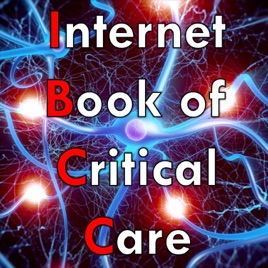
Advertise on podcast: PubReading
Country
This podcast has
343 episodes
Language
Publisher
Explicit
No
Date created
2021/07/21
Average duration
28 min.
Release period
4 days
Description
Researchers would love if they can expand time to fit in that publication, article, or review of their topic of interest; if that were true, however, there is no end to bottomless scrolling and missing the important details. PubReading would read out the abstract, results, and discussions to allow hassle-free information and a chance to create connections with like-minded individuals.
Podcast episodes
Check latest episodes from PubReading podcast
PubReading [346] - Transparency Is the Key to Quality - A. Fosang & R. Colbran
2023/07/03
A workshop held last June by the National Institutes of Health (NIH) Director’s Office, Nature Publishing Group, and Science focused on the role that journals play in supporting scientific research that is reproducible, robust, and transparent. The “Principles and Guidelines for Reporting Preclinical Research” that emerged from the workshop have since been endorsed by nearly 80 societies, journals, and associations.VOL.290,NO.50,pp.29692–29694 - 2015
more
PubReading [343] - The changing career trajectories of new parents in STEM - E. Cech & M. Blair-Loy
2023/06/26
The gender imbalance in science, technology, engineering, and math (STEM) fields has remained constant for decades and increases the farther up the STEM career pipeline one looks. Why does the underrepresentation of women endure? This study investigated the role of parenthood as a mechanism of gender-differentiated attrition from STEM employment. Using a nationally representative 8-year longitudinal sample of US STEM professionals, we examined the career trajectories of new parents after the birth or adoption of their first child. We found substantial attrition of new mothers: 43% of women leave full-time STEM employment after their first child. New mothers are more likely than new fathers to leave STEM, to switch to part-time work, and to exit the labor force. These gender differences hold irrespective of variation by discipline, race, and other demographic factors. However, parenthood is not just a “mother’s problem”; 23% of new fathers also leave STEM after their first child. Suggesting the difficulty of combining STEM work with caregiving responsibilities generally, new parents are more likely to leave full-time STEM jobs than otherwise similar childless peers and even new parents who remain employed full time are more likely than their childless peers to exit STEM for work elsewhere. These results have implications for policymakers and STEM workforce scholars; whereas parenthood is an important mechanism of women’s attrition, both women and men leave at surprisingly high rates after having children. Given that most people become parents during their working lives, STEM fields must do more to retain professionals with children.doi/10.1073/pnas.1810862116 - 2019
more
PubReading [341] - Carbon Nanomaterials (CNMs) in Cancer Therapy- A Database of CNM-Based Nanocarrier Systems - H. Mohan, A. Fagan & S. Giordani
2023/06/21
Carbon nanomaterials (CNMs) are an incredibly versatile class of materials that can be used as scaffolds to construct anticancer nanocarrier systems. The ease of chemical functionalisation, biocompatibility, and intrinsic therapeutic capabilities of many of these nanoparticles can be leveraged to design effective anticancer systems. This article is the first comprehensive review of CNM-based nanocarrier systems that incorporate approved chemotherapy drugs, and many different types of CNMs and chemotherapy agents are discussed. Almost 200 examples of these nanocarrier systems have been analysed and compiled into a database. The entries are organised by anticancer drug type, and the composition, drug loading/release metrics, and experimental results from these systems have been compiled. Our analysis reveals graphene, and particularly graphene oxide (GO), as the most frequently employed CNM, with carbon nanotubes and carbon dots following in popularity. Moreover, the database encompasses various chemotherapeutic agents, with antimicrotubule agents being the most common payload due to their compatibility with CNM surfaces. The benefits of the identified systems are discussed, and the factors affecting their efficacy are detailed.doi.org/10.3390/pharmaceutics15051545 - 2023
more
PubReading [340] - The application of human tissue for drug discovery and development - M. Clotworthy
2023/06/19
Human tissues are invaluable resources for pharmaceutical research. They provide information about disease pathophysiology - and equally importantly, healthy function; confirmation (or refutation) of potential drug targets; validation (or otherwise) of other models employed; and functional models for assessing drugs’ effects, whether beneficial or undesirable, in the most appropriate environment that can be replicated outside the human body. While human tissues have long been prized by pathologists in furthering our under- standing of disease processes, there is a growing appreciation of their value at the late pre-clinical stage of drug discovery. Human tissues’ potential to contribute to earlier phases of the process, before significant resources have been expended, is also now gaining recognition. Mounting concern over high rates of clinical stage drug failures mandates exploration of avenues for improving efficiency. Human tissue-based assays could play a key role in improving the translation process, as well as in moving towards stratified or personalised medicines. This editorial highlights some of the potential benefits of introducing human biosamples at each stage of the research process as a drug moves from concept to clinic. Some of the challenges with respect to obtaining tissues, minimising variability and gaining acceptance are also discussed.https://doi.org/10.1517/17460441.2012.689282 - 2012
more
PubReading [339] - Pleiotropic Effects of Icariside II on the Cardiovascular System- Novel Applications of Ethnopharmacology in Targeting Vascular Remodeling - C. Shan, R. Murphy et al.
2023/06/16
Albert Einstein once eloquently stated “We still do not know one thousandth of one percent of what nature has revealed to us.” Mother Nature has proven time and again to be the best engineer, architect, scientist, and doctor. This fact has not been lost on mankind, and since time immemorial, we have looked to nature for answers to human conditions and diseases. Indeed, our first evidence dates back to preliterary history as long as 50,000 years ago, in archaeological discoveries from a Middle Eastern grave site at Shanidar, Iraq, of a Neanderthal man which contained plant specimens, of which are still used in local traditional medicine. Since then, the use and application of herbal medicine has been recorded in every society from Traditional Chinese, Ayurvedic, Yunani, and other cultures in the developing world.DOI: 10.1097/FJC.0000000000001278 - 2022
more
PubReading [338] - A Systems Biology Approach to Investigate Kinase Signal Transduction Networks That Are Involved in Triple Negative Breast Cancer Resistance to Cisplatin - N. Mukherjee, A. Eustace et al.
2023/06/14
Triple negative breast cancer (TNBC) remains a therapeutic challenge due to the lack of targetable genetic alterations and the frequent development of resistance to the standard cisplatin-based chemotherapies. Here, we have taken a systems biology approach to investigate kinase signal transduction networks that are involved in TNBC resistance to cisplatin. Treating a panel of cisplatin- sensitive and cisplatin-resistant TNBC cell lines with a panel of kinase inhibitors allowed us to reconstruct two kinase signalling networks that characterise sensitive and resistant cells. The analysis of these networks suggested that the activation of the PI3K/AKT signalling pathway is critical for cisplatin resistance. Experimental validation of the computational model predictions confirmed that TNBC cell lines with activated PI3K/AKT signalling are sensitive to combinations of cisplatin and PI3K/AKT pathway inhibitors. Thus, our results reveal a new therapeutic approach that is based on identifying targeted therapies that synergise with conventional chemotherapies.doi.org/10.3390/jpm12081277 - 2022
more
PubReading [337] - Training early career researchers to use meta- research to improve science- A participant- guided “learn by doing” approach - T. Weissgerber
2023/06/12
Meta-research, or the science of science, is a powerful technique that scientists can use to improve science, however most scientists are unaware that meta-research exists and courses are rare. This initiative demonstrates the feasibility of a participant-guided “learn by doing” approach, in which a multidisciplinary, global team of early career researchers learned meta-research skills by working together to design, conduct and publish a meta-research study.https://doi.org/10.1371/journal.pbio.3001073 - 2021
more
PubReading [336] - Foldaxanes- Rotaxane-like Architectures from Foldamers - V. Koegler, Y. Ferrand et al.
2023/06/09
Mechanically interlocked molecules such as rotaxanes and catenanes contain free-moving components that cannot dissociate and have enabled the investigation and control of various translational and rotational molecular motions. The architecture of pseudo-rotaxanes and of some kinetically labile rotaxanes is comparable to that of rotaxanes but their components are reversibly associated and not irreversibly interlocked. In other words, pseudo-rotaxanes may fall apart. This Account focuses on a peculiar family of rotaxane-like architectures termed foldaxanes. Foldaxanes consist of a helically folded oligomer wound around a rod-like dumbbell-shaped guest. Winding of the helix around the rod thus entails an unwinding−rewinding process that creates a kinetic barrier. It follows that foldaxanes, albeit reversibly assembled, have significant lifetimes and may not fall apart while defined molecular motions are triggered. Foldaxanes based on helically folded aromatic oligoamide hosts and oligo(alkyl carbamate) guests can be designed rationally through the inclusion of complementary binding motifs on the rod and at the inner rim of the helix so that helix length and rod length match. Single helical foldaxanes (bimolecular species) and double helical foldaxanes (trimolecular species) have thus been produced as well as poly[n]foldaxanes, in which several helices bind to long rods with multiple binding stations. When the binding stations differ and are organized in a certain sequence, a complementary sequence of different stacked helices, each matching with their binding station, can be assembled, thus reproducing in an artificial system a sort of translation process.https://doi.org/10.1021/acs.accounts.2c00050 - 2022
more
PubReading [335] - Delta chirality ruthenium ‘light-switch’ complexes can bind in the minor groove of DNA with five different binding modes - J. Hall, C. Cardin et al.
2023/06/07
[Ru(phen)2 (dppz)]2+ has been studied since the 1990s due to its ‘light-switch’ properties. It can be used as a luminescent DNA probe, with emission switched on through DNA binding. The luminescence observed is dependent on the solvent accessibility of the pyrazine nitrogen atoms, and therefore is sensitive to changes in both binding site of the cation and chromophore orientation. The compound is also chiral, and there are distinct differences between the enantiomers in terms of the emission behaviour when bound to a variety of DNA sequences. Whilst a number of binary DNA-complex X-ray crystal structures are available, most include the lambda enantiomer and there is very little structural information about binding of the delta enantiomer. Here, we present the first X-ray crystal structure of a delta enantiomer bound to well-matched DNA, in the absence of the other, lamda enantiomer. We show how the binding site observed here can be related to a more general pattern of motifs in the crystallographic literature and propose that the delta enantiomer can bind with five different binding modes, offering a new hypothesis for the interpretation of solution data.doi: 10.1093/nar/gkw753 - 2016
more
PubReading [334] - Open science challenges, benefits and tips in early career and beyond - C. Allen & D. Mehler
2023/06/05
The movement towards open science is a consequence of seemingly pervasive failures to replicate previous research. This transition comes with great benefits but also significant challenges that are likely to affect those who carry out the research, usually early career researchers (ECRs). Here, we describe key benefits, including reputational gains, increased chances of publication, and a broader increase in the reliability of research. The increased chances of publication are supported by exploratory analyses indicating null findings are substantially more likely to be published via open registered reports in comparison to more conventional methods. These benefits are balanced by challenges that we have encountered and that involve increased costs in terms of flexibility, time, and issues with the current incentive structure, all of which seem to affect ECRs acutely. Although there are major obstacles to the early adoption of open science, overall open science practices should benefit both the ECR and improve the quality of research. We review 3 benefits and 3 challenges and provide suggestions from the perspective of ECRs for moving towards open science practices, which we believe scientists and institutions at all levels would do well to consider.https:// doi.org/10.1371/journal.pbio.3000246 - 2019
more
PubReading [333] - Enzymatic assembly of DNA molecules up to several hundred kilobases - D. Gibson, H. Smith et al.
2023/05/31
We describe an isothermal, single-reaction method for assembling multiple overlapping DNA molecules by the concerted action of a 5' exonuclease, a DNA polymerase and a DNA ligase. First we recessed DNA fragments, yielding single-stranded DNA overhangs that specifically annealed, and then covalently joined them. This assembly method can be used to seamlessly construct synthetic and natural genes, genetic pathways and entire genomes, and could be a useful molecular engineering tool.DOI:10.1038/NMETH.1318 - 2009
more
PubReading [332] - Do natural DNA triple-helical structures occur and function in vivo? -
2023/05/30
Formation of natural intramolecular triple-helical structures of DNA is still an intriguing research topic in view of the possible involvement of these structures in biological processes. The biochemical and biophysical properties of DNA triplex structures have been extensively studied, and experimental data show that H-DNA is likely to form in vivo and may regulate the expression of various genes. However, direct and unambiguous evidence of the possible biological roles of these structures is yet elusive. This review focuses on the basic facts that are in favor of, or against, the hypothesis of the presence and function of natural DNA triple-helical structures in vivo, and outlines the different methods and probes that have been used to support these facts.DOI 10.1007/s00018-003-3046-3 - 2003
more
Podcast reviews
Read PubReading podcast reviews
Podcast sponsorship advertising
Start advertising on PubReading & sponsor relevant audience podcasts
You may also like these medicine Podcasts

4.4
223
117
Not Your Mother's Menopause with Dr. Fiona Lovely
Discussions on women's health, the peaceful passage of menopause, peri-menopause and hormonal balance for all women., Dr. Fiona Lovely

4.7
801
123
Brain Science with Ginger Campbell, MD: Neuroscience for Everyone
Ginger Campbell, MD

4.9
782
70
The Matt Walker Podcast
Dr. Matt Walker

4.8
364
289
The Doctor's Kitchen Podcast
Dr Rupy Aujla

4.7
471
302
Emergency Medicine Cases
Dr. Anton Helman

4.8
344
391
The Thyroid Fixer
Dr. Amie Hornaman

4.9
624
136
The Internet Book of Critical Care Podcast
Adam Thomas & Josh Farkas

4.8
634
217
AFP: American Family Physician Podcast
American Academy of Family Physicians

4.8
1120
208
Psychiatry & Psychotherapy Podcast
David Puder, M.D.

4.6
231
104
Psychopharmacology and Psychiatry Updates
Psychopharmacology Institute



